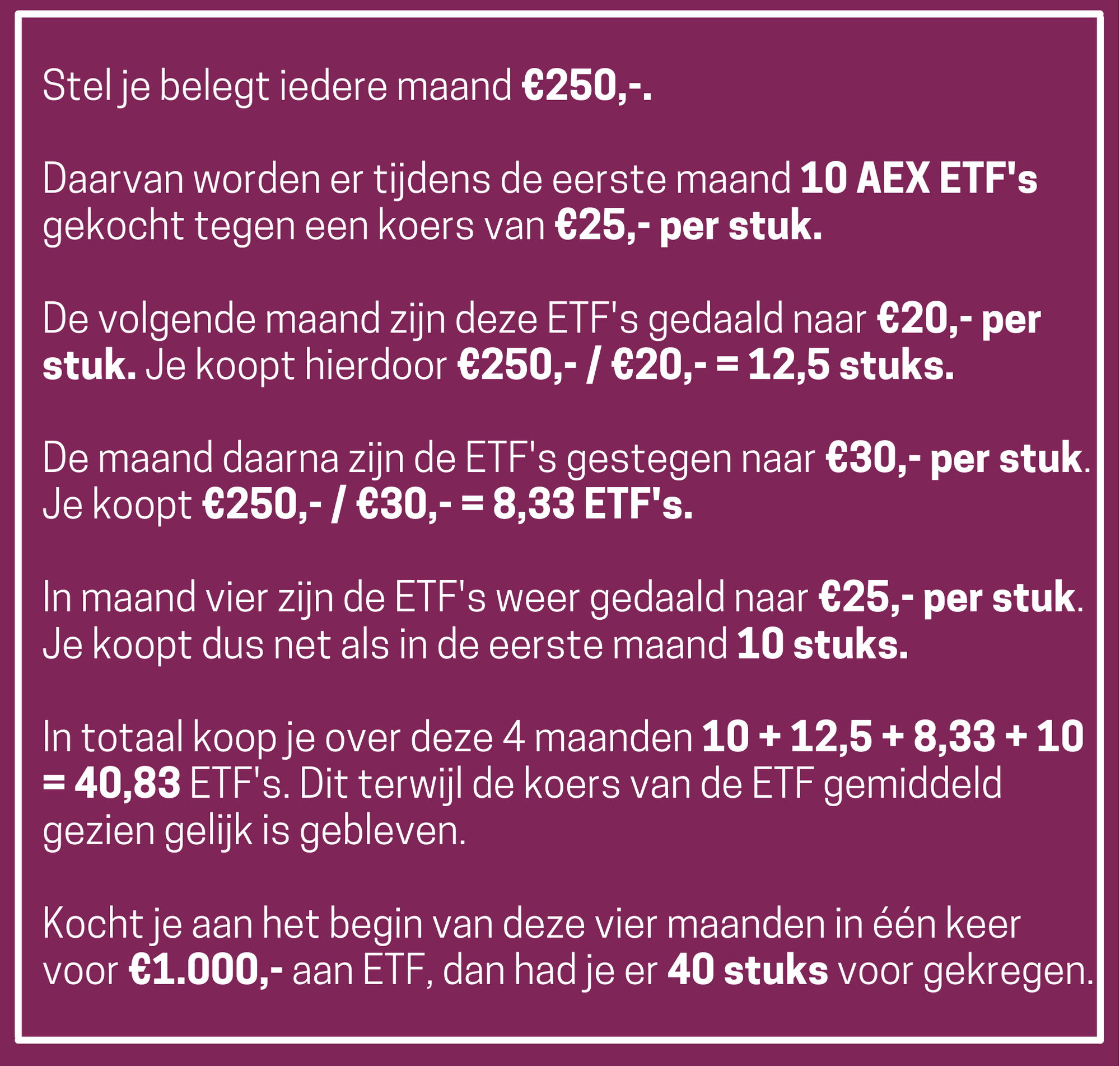What does dollar cost average mean?

It may well be that if you’ve been immersed in investing for a while, you’ve seen the term “dollar cost average” pass by. But what does dollar cost average mean? Chic investment term for: periodic investing. In this article, we are going to explain the advantages and disadvantages of this investment tactic.
Pst: Want to learn how to invest in a safe, women-only environment? Become an elfin member, join thousands of other women, and get access to the Beginning with Investing course, workshops and master classes on investing and various tools like an investment tracker!
What does dollar cost average mean?
Dollar cost averaging is a trendy term for – in plain Dutch – periodic deposit. This is a tactic where you invest an amount of money each period (month, quarter, year), rather than investing all your money at once.
Risk minimization
The main reason for applying this is because of risk minimization. We know that stock prices can go up and can go down. The market cannot be timed and the stock market can be unpredictable. To avoid putting your money in at a peak of the market – after which you may thus make a negative return for a while as prices fall – you can choose to invest an amount each month (or quarter).
Read more about the risks of investing here
In this way you spread out over time, which can minimize the risk that volatility (the degree to which the price fluctuates) brings. Some other benefits may include:
Periodic investing is low key
Putting in a smaller amount each month is soon achievable. So you don’t have to have a lot of money to invest, a little each month is enough to build your wealth. Suppose you invest €200 every month, this is €2,400 after a year anyway!
Better risk diversification
When you invest periodically, you are less dependent on timing. So you are not trying to time the market – and the right buying moment. By timing, we mean the moment you redeem a particular investment. You want to get in when markets are low and sell when markets are high – buy low, sell high. But you don’t know when those low and high moments are. When you deposit periodically you avoid this turmoil.
Take advantage of currency fluctuations
In some cases, with periodic investing, you can even profit from price fluctuations. How that works. Well, like this:
Periodic investing brings peace of mind
By setting up a periodic transfer each month and investing automatically, you remove anxiety. You see your investment as a monthly “fixed charge” and don’t get carried away by emotion: “Should I invest right now or not?”
Flexibility
Flexibility is nice. You can set up a periodic transfer monthly, or you can invest quarterly or weekly, whatever suits you. Are you tight for a few months? Then you don’t invest for a while. The have the latitude to decide how much you invest at a time.
Disadvantages of Dollar Cost Average tactics
Periodic investing has many advantages, the most relevant of which, in our view, is the diversification effect. But periodic investing can also have drawbacks, and they have to do with costs. With many brokers or banks, when you make a transaction, you pay a fee for it. And costs can weigh on your bottom line, we know. Especially if you’re investing with smaller amounts, a transaction can add up. So double check the costs as far as your investments are concerned. At Degiro (broker) you can trade some ETFs for free every month, and at BUX Zero you can also invest commission free. See the difference between banks and brokers for investing here.






